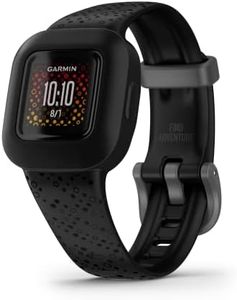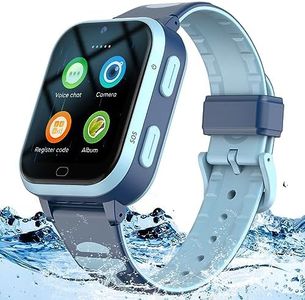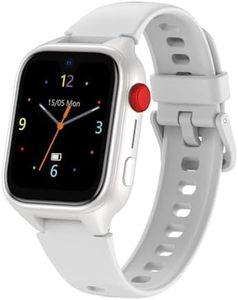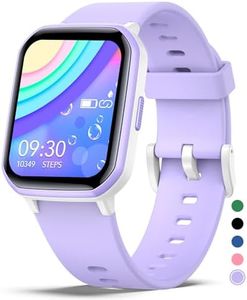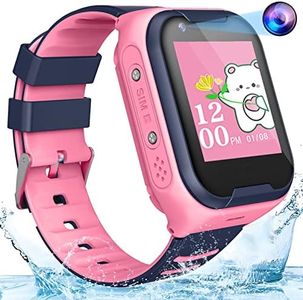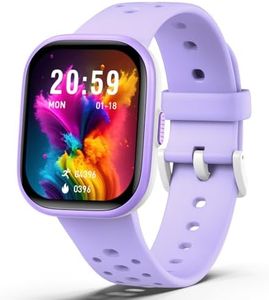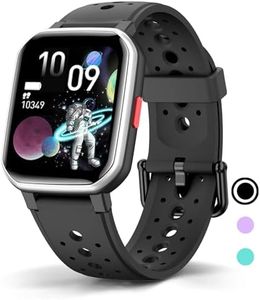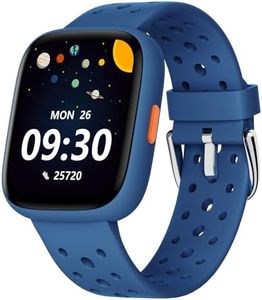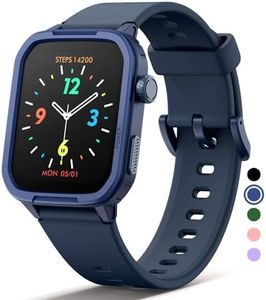We Use CookiesWe use cookies to enhance the security, performance,
functionality and for analytical and promotional activities. By continuing to browse this site you
are agreeing to our privacy policy
10 Best Kids Smart Watches
From leading brands and best sellers available on the web.Buying Guide for the Best Kids Smart Watches
Choosing a kids' smart watch can be a rewarding experience for both parents and children. These watches often serve multiple purposes such as keeping kids entertained, teaching them new skills, and most importantly, helping parents stay connected and monitor their kids’ safety. While it may seem overwhelming with so many choices, focusing on the core features and understanding how they align with your needs will help you make a suitable decision. Start by considering your child’s age, how much independence they have, and what specific functions you find most beneficial, like communication, safety features, or educational activities.Communication FeaturesThis spec covers how the watch allows kids to stay in touch with parents or caregivers, usually through calling, voice messages, or text messages. It's important because it can give peace of mind knowing you can reach your child and they can contact you if needed. Some watches only allow calls to a preset list of contacts, while others have messaging options. Watches with more advanced communication may include video calls. Choose a level that matches your family’s comfort with independence and your child’s ability to use these features responsibly.
GPS TrackingGPS tracking lets parents know their child's location in real-time via a smartphone app. This is crucial for safety and peace of mind, especially if your child travels to school or activities alone. Some watches offer basic location tracking, while others let you set up safe zones or send alerts if your child leaves a designated area. If your child is very young or you’re extra concerned about their whereabouts, pick a watch with more advanced tracking and alert capabilities.
Durability and Water ResistanceKids are active and often not careful with gadgets, so a durable, water-resistant watch is a big advantage. Durability typically refers to how well the watch handles bumps, drops, and daily wear. Water resistance means it can withstand spills or rain, and sometimes even some swimming. Watches often range from splash-proof to fully waterproof models. For younger or more active kids, prioritize high durability and water resistance for longer-lasting use.
Battery LifeBattery life determines how often you’ll need to recharge the watch. Short battery life means more frequent charging, which can be inconvenient. Basic models might last a day or two on a single charge, while others go up to a week depending on features and usage. If your child uses the watch a lot or you'll be away from home, look for longer battery life. Simpler watches often last longer, while those with GPS and calling drain faster.
Educational and Entertainment FeaturesMany kids' smart watches include games, learning apps, fitness activities, or reward systems to keep kids engaged. These features can help teach time management, encourage movement, or even boost math and reading skills. Watches range from simple learning games to advanced fitness tracking. Pick the level of entertainment and educational content that fits your child’s age, maturity, and interests without becoming a distraction.
Parental ControlsParental controls help you manage your child’s experience by setting limits on features, apps, or contacts. This is important to keep your child safe from unwanted calls or distractions during school. Controls range from simple contact lists to time limits, app restrictions, or emergency functions. Select a watch with controls that align with your parenting style and comfort level.
Ease of UseA watch that is easy for your child to use and understand is essential. Look for clear screens, simple menus, and easy-to-press buttons. Younger children benefit from more basic interfaces, while older kids might appreciate a few more features. Consider your child’s age and how comfortable they are with technology.
